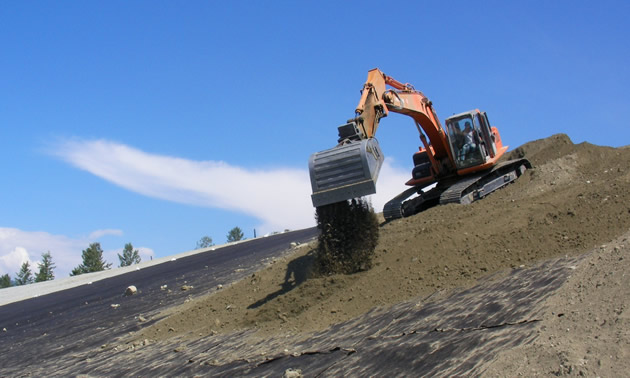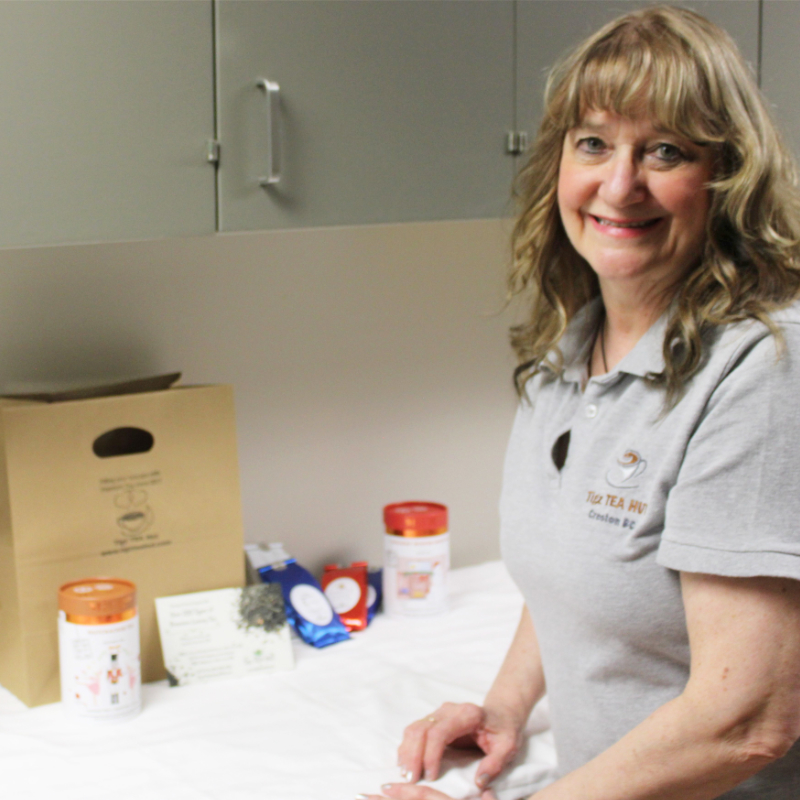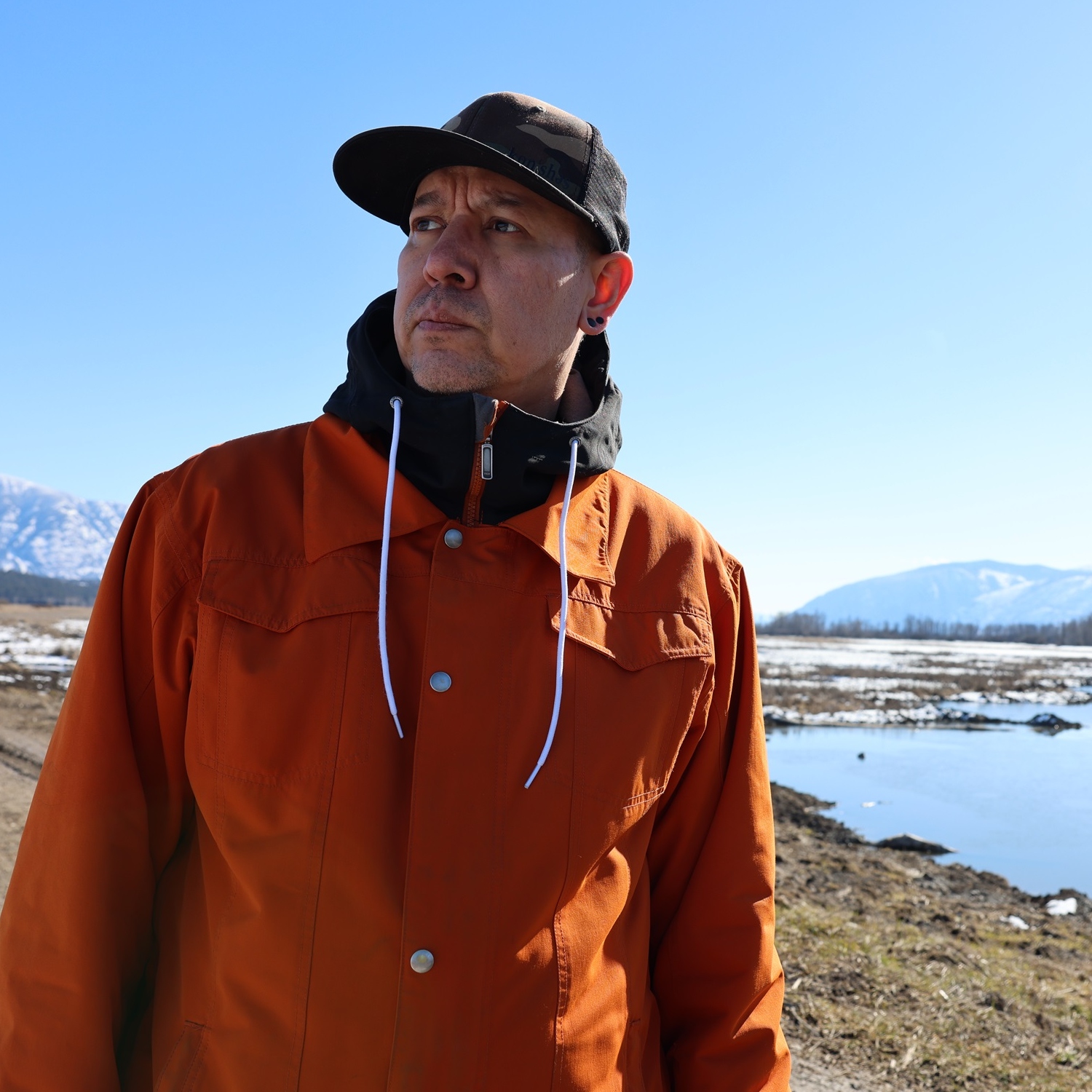Talking trash: Building a better landfill in Creston
The Regional District of Central Kootenay is working on a project to manage waste in a sustainable way at the Creston landfill

Soil is placed over a geomembrane cover that will help protect the surrounding environment at the Creston landfill. — Photo courtesy RDCK
Most people don’t spend much time or energy thinking about garbage. We put it into a bin or out on the curb and that’s the last we consider it. Behind the scenes, however, garbage is a pretty big deal. At the landfill near Creston there’s a lot going on to ensure that our trash is handled in a sustainable manner.
At the Creston Valley landfill, a major project is underway to help contain waste that has been previously generated. Last year saw the completion of the first phase of the project. Sections of the landfill that had previously been left without a permanent closure cap have been covered with a geomembrane. This will keep water that lands on the site from filtering through and contaminating surrounding areas.
The installation of the geomembrane cover doesn’t mean that the site is being closed, only that a segment is being closed off. The covering is installed over a section of the landfill that isn’t intended for future use. It will then be planted over and left.
The second phase is taking place in 2012. It will be a continuation as the project moves forward with laying down geomembrane.
“It’s part of our long-term overall plan for sustainable operations,” said Mike Morrison, resource recovery manager for the RDCK. “It’s part of our commitment to improving environmental performance for the site.”
The project is scheduled to take three years to complete. The summer months offer a window of construction time for each phase. Currently, the project is on schedule in regard to both time and budget.
“We were at a point where we had to make some decisions over the longer-term infrastructure,” said Morrison. “We had two engineers involved in the site. It was all part of an overall fresh look at the site starting in 2008.”
The transfer station that Creston residents are now familiar with was implemented around that time to help keep public traffic away from the active landfill area. Future phases at the site will also include a geomembrane cap. The plan is to minimize the open portion of the landfill to one hectare at any given time.
Another aspect of the improved Creston landfill is that it practices waste diversion at every given opportunity. A number of different recycling opportunities are also available at the site. People who use the site have the opportunity to separate their waste on their own into wood, metal or other materials. From that point, various contractors help ensure that the recycling potential is met. Freon, scrap metal and tires are all recovered. Wood and garden waste is ground up by yet another contractor.
In addition, slopes on the site have been stabilized and the area has been expanded through some rock blasting. Fencing to help keep the site free of bears was also added. Additionally, a steel plate cover system was purchased to reduce exposure of waste before it is covered with soil.
It’s a combination of all these initiatives that helped the Creston landfill to win the Crystal Moose Award. This is handed out annually by the consulting firm of Sperling Hansen Associates, one of the top landfill engineering firms in the province. It is given to the most improved landfill in B.C.
“We’re required to have a designs and operations plan for the site,” said Morrison. “We use this as our guideline for how we develop the site. We’re pretty much on track with our plan.”
The Regional District of Central Kootenay (RDCK), which manages the landfill site, also involve it in a number of social initiatives. It funds an environmental education program which is offered through local schools. Every year, the classes participate in a component on waste management and then tour the landfill site.
Feedback from the Lower Kootenay First Nation is also an important aspect of the operations at the Creston landfill. The site is located right next to the reserve. Open communication is an ongoing process, with a focus on how to improve on the site.
A compost component is also planned for the site. At present, yard and garden waste is composted, but there are hopes to improve on that infrastructure.
Despite all the improvements, the RDCK has a mandate to continue to ensure that garbage at the Creston landfill is dealt with in the most efficient way possible. Growth is an important part of any operation and waste management is not exception.
“I would say we’re well underway to becoming a model site for rural waste management,” said Morrison. “For small rural landfills we’re at the leading edge of innovation and environmental protection. We’re always striving to be better, but for a small landfill it’s a very good site.”






Comments